The Lake was built in 1982, featuring the world’s largest plastic sheet lining, 12 million gallons of water, 11,000 fish, and sailing dinghies for school children. “The Cascade”, a metal sculpture, replenished the lake with £30k worth of tap water a year. Things are more natural nowadays; ducks and fish are the main occupants and fishing is the most popular sport.
The Abercrombie Plan predicted it would take 50 years to realise the park. Uniquely, every square foot was clawed back out of the urban landscape, a genuine “post-industrial park”, with the GLC and its predecessor the LCC driving this painstaking process through with a relentless drip of land purchases, under frequent criticism of creating a blighted derelict landscape.
Slowly but surely the views tipped from streets-with-gaps to open-spaces-with-island- clusters of buildings. Until, in 1982, the gaps were joined up, and the park was formally re-opened as one discernible whole, recognisably, as we see it today.
With the Grand Surrey Canal filled in, the decision was made to give the new Burgess Park a lake. The Lake was man-made in 1982, employing the world’s largest plastic sheet lining, 12 million gallons of water and 11,000 fish. It also featured The Cascade (now gone), a bizarre sprite-like feature, replenishing the lake with £30k worth of tap water a year.
Today the old lake has been extended and split into two areas. The larger eastern side of the lake allows for fishing, and the smaller lake is purely ornament. Both lakes contain fountains to oxygenate the water.
The edges of the lake are naturalised with soil banks that slope into the water with the banks seeded with grass, and areas around the lake planted with marginal aquatics. The lake has became home to swans and ducks.
The lake boasts a new walkway bridge dividing the fishing and ornamental areas, and providing fantastic views across the water. A woodland has been created on the north (Albany Road) side to receive run off from the park lawn before it drains into the main lake, encouraging lush vegetation. Southwark Nature Action Volunteers have a number of projects working to improve nature on and around the lake, if you’d like to get involved.
Fishing at Burgess Park
Fishing in this part of London did not start with the lake – it was also available with the canal as remembered here. Fishing in the lake started in 1985 after marker buoys were fixed around the edges of the lake. In the 1990s the boating was removed and fishing took over, since then the lake has been slowly turned over to fishing and nature. The Fishing Club cares for the lake. As you walk around the lake there are dedicated fishing ‘swims’, which support a thriving fishing scene, with various types of fish including carp – mirror, liner and common, some of gigantic proportions, regularly being caught.
‘Turn up to fish at Burgess Park lake, the sun just up, light mist coming off the water, the coots calling out, goose honking. Set up the rods watching the water, looking for signs of fish, which bait to use, pop up, bottom bait or zig rig. Rods baited and cast out waiting for fish to feed, looking around, the first of the dog walkers start to fill the park, then the joggers. Screaming alarm brings you back to your rods, pick it up, strike and set the hook, let battle commence, the fish runs off at speed, rod bends into its battle curve and the line sings in the breeze, pumping the rod up and down to gain line, the fish takes line as the clutch start clicking, as the line peels off, as the fish tries to make a dash for freedom, runs by the fish getting shorter and more line gained back on the reel, the fish finally on the surface and the net in the water, one last try, the fish makes a weakened dash for its freedom and at last its head is up and slowly pull the fish over the draw-string of the net, scoop up the net and the fish is yours, wet the mat and sling, sort out the scale, zero them, gently lift the fish out of the water, laying it on the mat, to uncover a bar of gold, sunlight flashing off its gold scales of a common carp, hook out of mouth, fish weighed and photos taken, then return it to the water to fight another day.’
Chaz Charrington
Islands Update from Anna Colligan, February 2021
Video: Neil Atkinson
Project Duckling is the latest step in Burgess Lake‘s journey towards ecological health. It aims to create additional habitat for water birds, encourage more successful nesting and help to improve water quality in the lake.
Susan and Jenny of Friends of Burgess Park (FOBP) got the project started. They were able to secure funding from Southwark’s Cleaner Greener Safer fund and the Mayor of London in 2019-2020. Monica of FOBP designed the information sign which was installed on the lake bridge. Anna of Southwark Nature Action volunteers (SNAV) supplied drawings and sourced the “Biohaven” islands from the supplier Frog Environmental. Volunteers from FOBP and SNAV and experienced contract workers from The Conservation Volunteers (TCV) assembled and launched 10 units of floating islands.
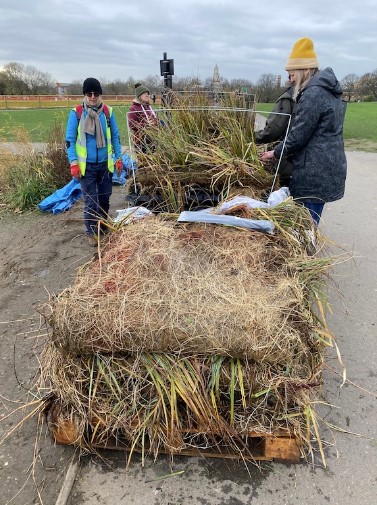
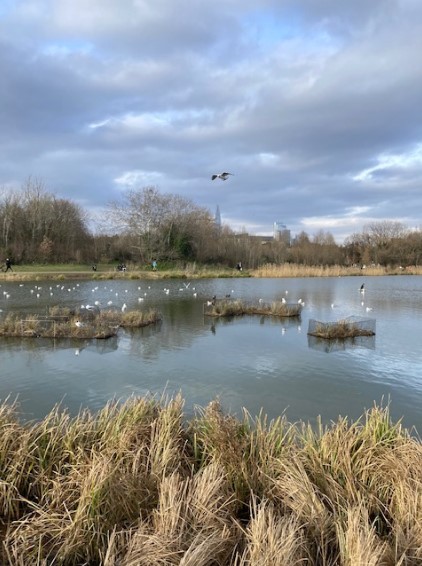
Jenny invited children from Cobourg Primary School to attend the island launch and learn about the water birds. The children put their wishes in two lockboxes on the island on launch day. Dave Clark gave the kids a great educational talk about the waterfowl. Michael of TCV explained the islands to them.
In the spring, when the water level goes down, TCV will also be here to do the bank work. Volunteers will be needed to work with TCV to stabilise and re-vegetate the lake bankside with additional soil and planting.
The next step for the islands will be summer 2021 when Michael who is usually based at Lavender Pond in Rotherhithe will go out in his tiny boat again on Burgess Lake. He will remove the wildfowl protection netting which is currently around the islands to let the plants get established. Then the waterfowl will have easier access.
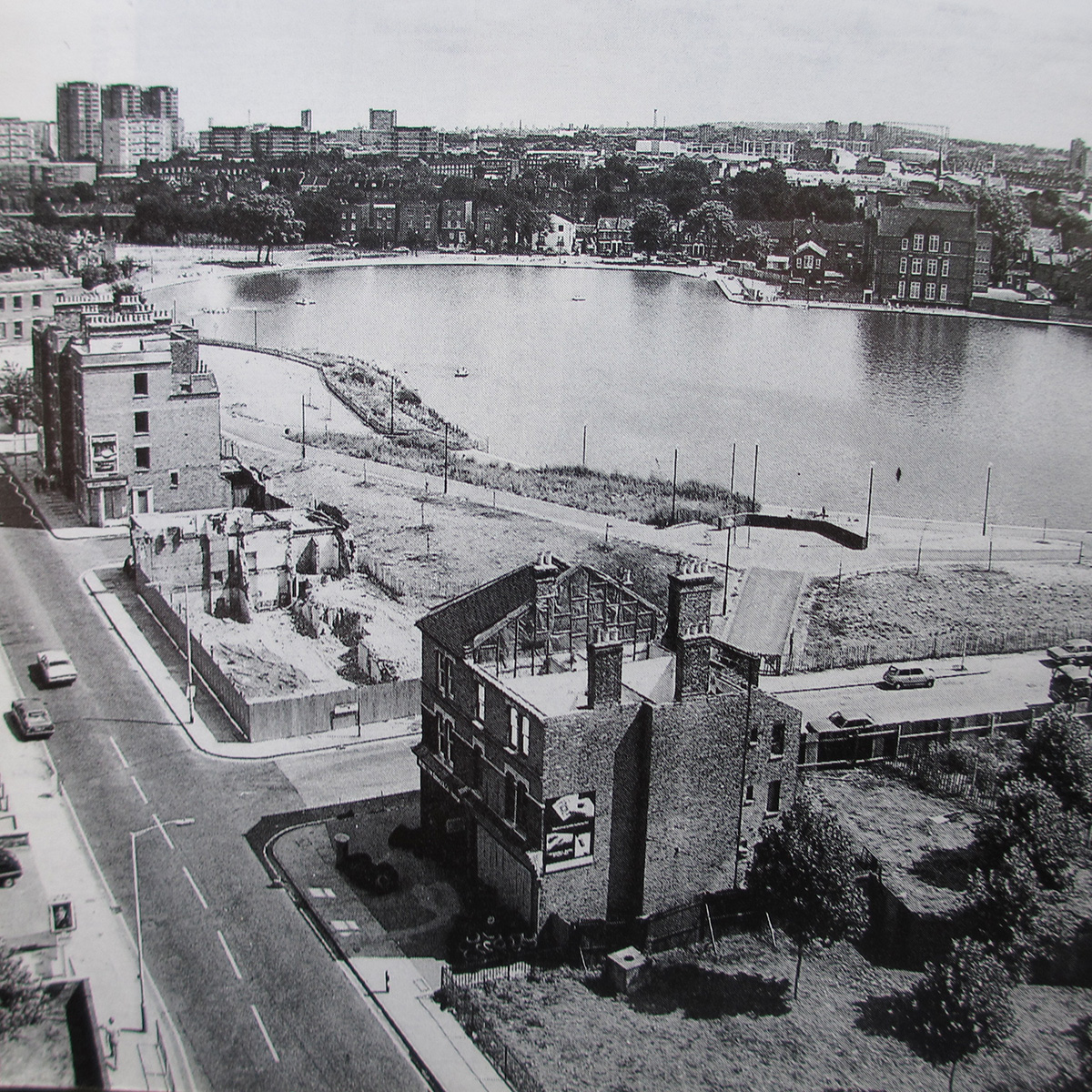
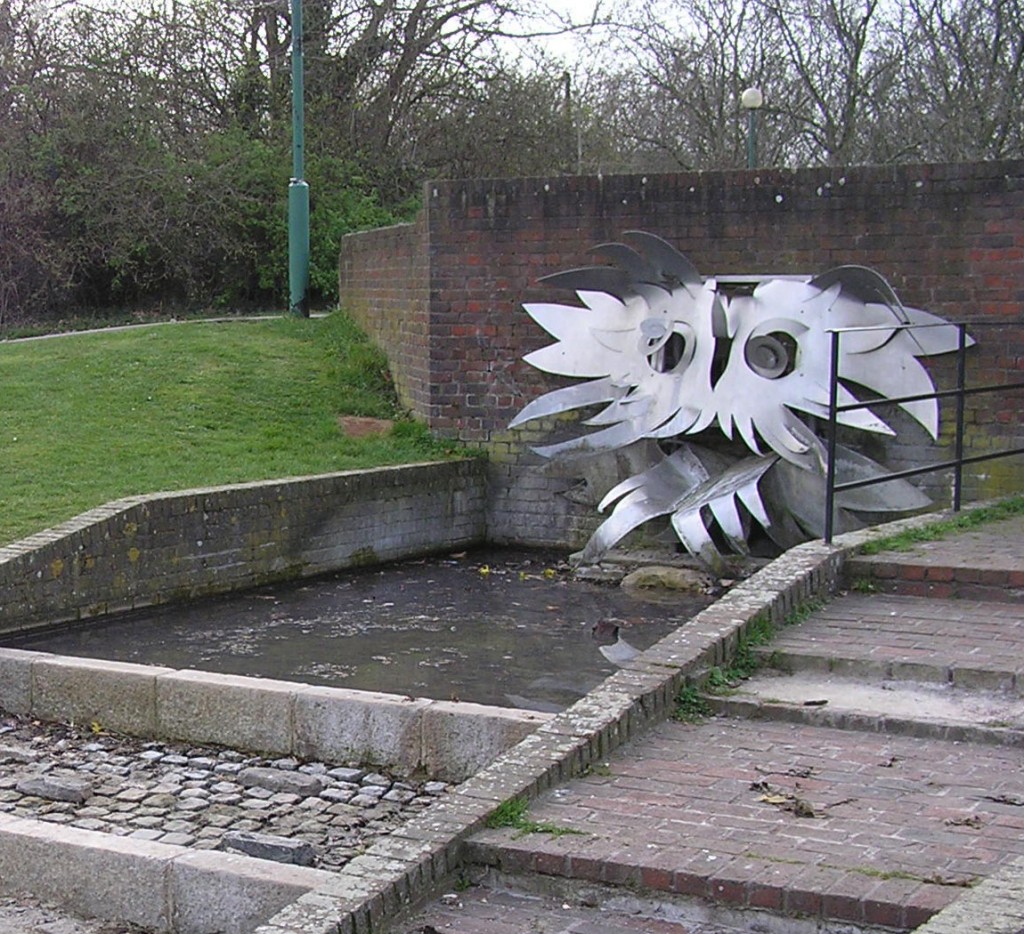
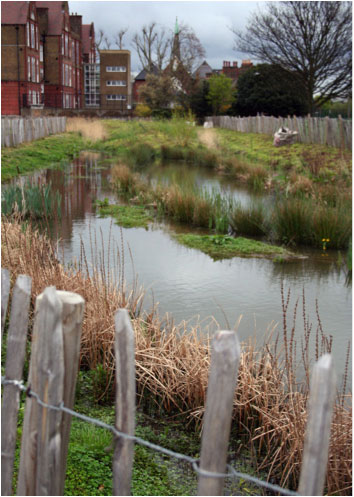

Love this place, as a child and as an adult.. The New development (in the Parkhouse Industrial area – Ed?) is going to block light away from the church and the park, make 14 storey high-rise buildings that are not in with the rest of the area, so if anyone from the area reading this, must Oppose to this happening, don’t let the developers destroy our area with no thought to u or i…???
Do I need a licence to fish there?
I believe you do need a day ticket. Check with Southwark Council here: https://www.southwark.gov.uk/leisure-and-sport/local-leisure-and-sport-venues/fishing
How deep is the lake?
I believe it´s a couple of feet only. The waterproof lining was replaced in 2011-12 and I´d estimate about that. There are pictures of people walking about in it in the video at the bottom of the Jessie Burgess page!